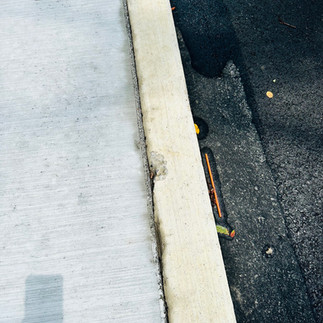As a real estate investor, you understand that a solid foundation is the key to long-term success. When it comes to property development, concrete plays a pivotal role in creating durable and stable structures. However, issues like shaling, cracking, and crumbling can mar the prospects of a newly poured concrete pad. In this article, we will explore the potential reasons behind these problems and guide you on identifying top-notch concrete work. Additionally, we will share expert advice on handling unsatisfactory outcomes from contractors, empowering you to elevate your real estate investments.
Identifying Factors Contributing to Concrete Pad Issues:
1. Improper Mixture:
The foundation of quality concrete lies in the precise mix ratio of cement, water, aggregates, and additives. Deviating from these proportions can compromise the strength and longevity of the pad, resulting in unwanted cracks and surface deterioration.
2. Inadequate Curing:
Curing is a critical step in concrete work, influencing its overall strength. If not given sufficient time or done correctly, the concrete becomes susceptible to damage, making it essential to employ proper curing techniques.
3. Insufficient Compaction:
Effective compaction during the pouring process ensures the removal of air voids, leading to a more uniform and robust concrete pad. Neglecting this step may result in weak spots and structural vulnerabilities.
4. Temperature and Weather Considerations:
Extreme temperature fluctuations during the curing phase can induce thermal stress on the concrete, causing unsightly cracks and compromising its integrity.
Recognizing Quality Concrete Work:
1. Smooth and Uniform Surface:
A well-executed pour results in a smooth and even concrete surface, indicating meticulous leveling and compaction. Visually inspect the pad to ensure a consistent finish.
2. Compliance with Engineering Specifications:
Review the engineering specifications to verify that the concrete pad meets the required thickness and load-bearing capacity. Adherence to these standards is crucial for long-lasting structures.
3. Consistent Coloration:
Uniform coloration throughout the concrete indicates a properly mixed batch, reflecting skillful workmanship and attention to detail.
4. Evident Curing Measures:
Look for visible signs of proper curing, such as water misting or wet burlap. These measures demonstrate that the contractor has taken the necessary steps to promote optimal concrete strength.
Addressing Unsatisfactory Concrete Workmanship:
1. Documenting Concerns:
Thoroughly document any issues or imperfections in the concrete pad, capturing them with photographs and detailed notes. This evidence will be invaluable in discussions with the contractor.
2. Professional Communication:
Approach the contractor with a constructive and respectful tone to express your concerns and request remedial actions. Effective communication can often lead to a satisfactory resolution.
3. Contractual Review:
Review the contractual agreement with the vendor to understand the stipulated quality standards and obligations. This will help you assess if the work meets the agreed-upon terms.
4. Expert Consultation:
Consider seeking advice from a professional engineer or concrete specialist to obtain an unbiased evaluation of the concrete work. Their expertise can guide you in making informed decisions.
5. Legal Recourse:
As a last resort, explore legal options if the contractor fails to address the issues or meet contractual obligations. Legal measures can help protect your investment and uphold your rights.
With a solid grasp of concrete work nuances, you can confidently steer your real estate investments towards excellence. By identifying potential issues, recognizing quality craftsmanship, and addressing unsatisfactory outcomes effectively, you will fortify the foundation of your properties and pave the way for lasting success in the dynamic world of real estate.
Subscribe and never miss an edition of Managing the Commercial Scene!













